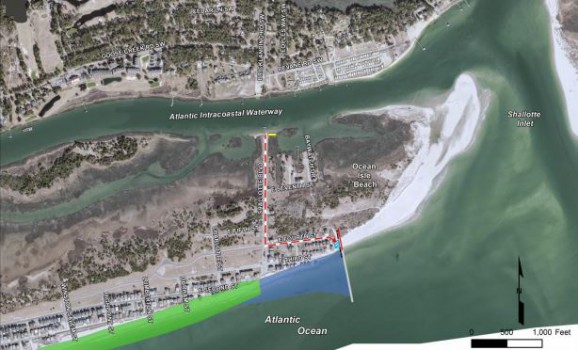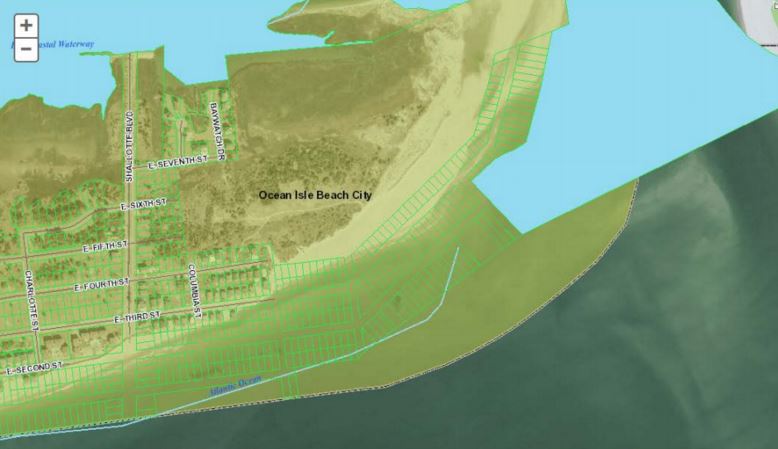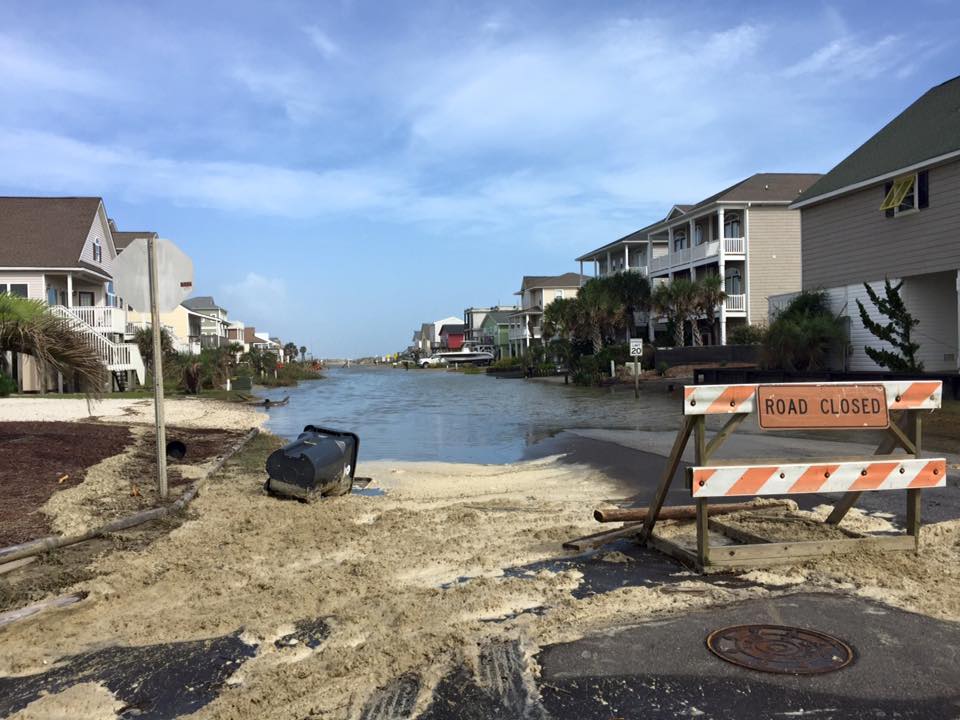OCEAN ISLE BEACH – Pressure from environmental groups last week stopped coastal regulators from processing this town’s incomplete state permit application to build a terminal groin.

Officials with N.C. Department of Environmental Quality’s Division of Coastal Management on Thursday reversed a decision to accept the application following objections by the Southern Environmental Law Center and the N.C. Coastal Federation. The groups argued successfully in separate letters to the division that the application could not be judged as complete until a required environmental study is finished.
Supporter Spotlight
The state officials previously said all requirements for the Coastal Area Management Act, or CAMA, major permit had been satisfied. The state law that allows terminal groins on the beach requires that applicants prepare an environmental impact statement, or EIS. The EIS that is also required by federal law for the dredging permit would meet the state requirement, but that study is still being reviewed by the Army Corps of Engineers and is not expected to be completed until late next summer.
Division officials originally said the Corps’ draft EIS, along with comments from various state agencies, would suffice but later changed their decision based on advice from the DEQ’s attorney, who reviewed the environmental groups’ stated concerns. Officials said their previous decision had been based on incorrect guidance.
Mike Giles, a coastal advocate with the federation’s office in Wrightsville Beach, said he was pleased with the outcome but troubled that state regulatory agencies do not regularly audit and review the laws and rules that govern their decisions.
“One has to wonder what other decisions that affect the protection of our coast have been based on incorrect information. Development of the former Mad inlet site and potentially illegal taking of public lands for private development at Sunset Beach come to mind,” Giles said.
The environmental groups had threatened a legal challenge if the division moved forward with processing the application. In his letter to the division sent Oct. 26, Geoff Gisler, the law center’s senior attorney in Chapel Hill, urged the division to determine that the application was incomplete. Gisler told Coastal Review Online that if the division had accepted the application, “I would characterize it as illegal.”
Supporter Spotlight
Gisler said the legal mandate for a final EIS is to provide full disclosure of the potential environmental effects. “When you look at these projects – they were banned for 30 years for a reason – there’s a mandate to take a deeper look at these projects to look at environmental impact and also make sure the public has a look at the impacts,” he said.
Ban Repealed
The longtime state ban on terminal groins along the beachfront to control erosion was repealed in 2011 when the N.C. General Assembly passed a law allowing four of the structures to be built. The legislature this year raised the total to six by allowing groins at Bogue and New River inlets. Bald Head Island has received a state permit and started construction. Figure Eight Island and Holden Beach are in the review process for federal permits.

Ocean Isle Beach filed its application to the Corps of Engineers in 2012 for a federal dredging permit to build a terminal groin to slow the chronic erosion problem on the east end of the 5.6-mile-long island. Past efforts to protect the beach from erosion had failed. About 45 homes are deemed at risk over the next 30 years, should past erosion trends continue. Of those homes, 18 are on the oceanfront row. Five homes have been lost to erosion on the east end of the beach since 2005.
‘Wholly deficient’
The review for the required state CAMA major permit involves a dozen or more state and federal agencies.
Gisler said that without the environmental impact statement, the proposal cannot be properly evaluated by those agencies or the public. The Corps released the town’s draft EIS in January. It was “wholly deficient, with a multitude of errors,” Gisler said.
Gisler also focused on the lack of public disclosure. “The public still hasn’t had opportunity to review this project as required by federal law and state law. It’s clearly required and serves a central role in this process,” he said.

The federation expressed similar criticisms of the draft EIS in its comments submitted in March, calling it “misleading” and “flawed.”
“The DEIS does not provide the public and decision-makers with the thorough and comparable analysis of reasonable alternatives, thus confining the public information to narrow, selective and targeted information that supports only the preferred alternative. Further, the flawed document denies the residents of Ocean Isle Beach an unbiased analysis of the project so that they can make an informed decision about whether to fund this project with local funds,” the federation said.
The federation urged the Corps to issue a revised draft that addresses its concerns.
The Town’s Risk
Doug Huggett, who manages major CAMA permit applications for the Division of Coastal Management, responded Wednesday to the law center’s complaint. He defended the initial decision to accept the application, saying the legislation allowing terminal groins “can be confusing.” State and federal agencies completed their review of the draft EIS in March, Huggett noted in his written response. But the review did not address the comments received, as required for the final document.
When that review was completed, the division told Ocean Isle that it could apply for its state permit with the caveat that the final EIS, also required under the National Environmental Policy Act, or NEPA, could lead to changes.
“The division cautioned that the town that it was assuming the risk, if it chose to apply before the NEPA process was completed, that additional CAMA authorizations could be required if the final EIS review resulted in changes to the various aspects of the proposed project,” Huggett noted. “In this case, the town chose to accept this risk and to move forward with the permit application process.,”
Gisler on Wednesday countered Huggett’s letter, saying the process is not complete until the final EIS is circulated. A final EIS is required because “it is essential to the law’s underlying purpose, disclosure of environmental impacts.” Responses to comments must be included in the final EIS, he added.










